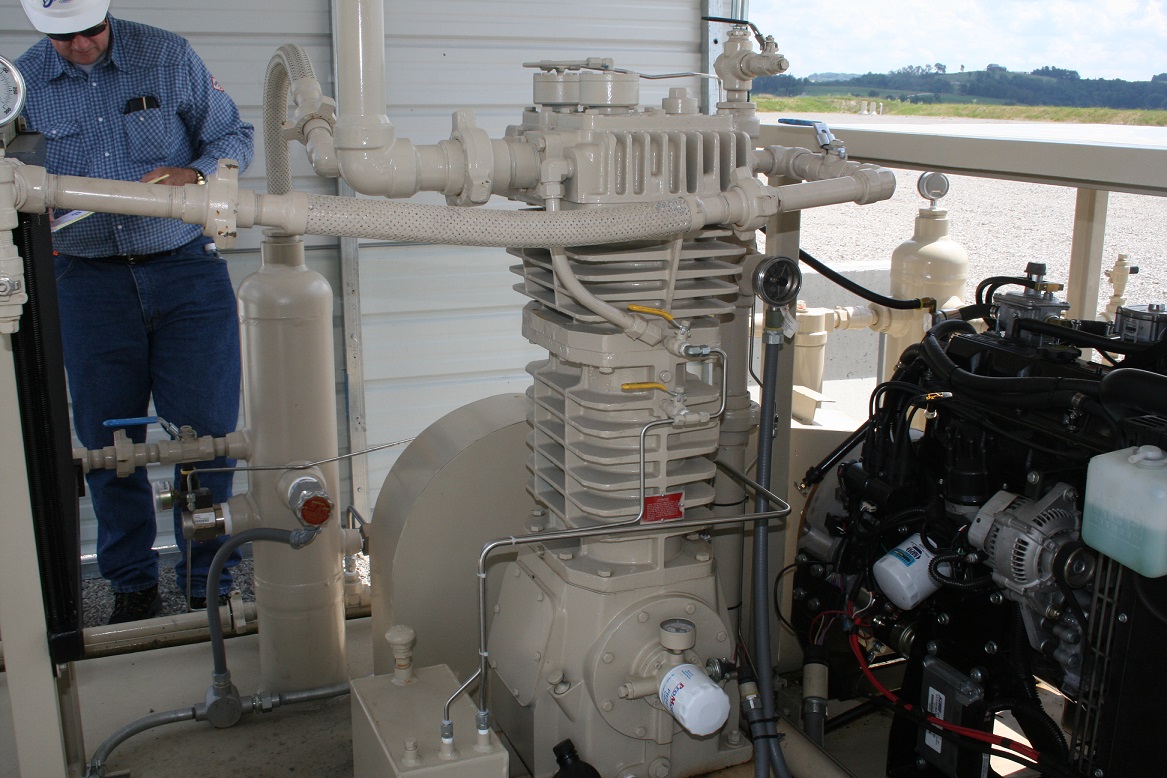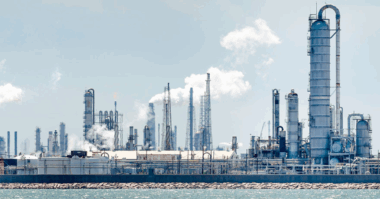By Kevin Hogue
Increased oil and natural gas production in such prominent shale fields as the Bakken in North Dakota, Eagle Ford in Texas, Niobrara in Colorado, and Marcellus and Utica in New York, Ohio, West Virginia and Pennsylvania has been a boon for the United states consumer, with lower prices for gasoline and the feedstocks (natural gas, heating oil, etc.) that are used for home heating.
The increase in oilfield activity, however, has also meant a corresponding increase in the amount of vapors that are created and emitted during oil-and-gas production, transportation and storage. To the prevent the escape and loss of these vapors—which are saleable assets in addition to being potentially dangerous to the environment—many oilfield operators arte turning to the installation of vapor-recovery units (VRUs) at their storage sites.
Like most mechanical systems, VRUs only operate at peak efficiency and effectiveness if they are installed correctly and in conjunction with a growing list of local, state and federal regulations. That’s because many oilfield vapors—compounds like benzene, toluene, ethyl- benzene and xylene—have been classified as Hazardous Air Pollutants (HAPs) or Volatile Organic Compounds (VOCs) by the U.S. Environmental Protection Agency (EPA).
Additionally, oilfield storage-facility operators also must be aware of the EPA’s New Source Performance Standard 40 CFR, Part 60, Subpart OOOO, which became law in 2012 and has come to be known as the “Quad O” regulation. Quad O establishes emissions standards and compliance schedules for the control of VOCs and sulfur dioxide (SO2) emissions from storage tanks that temporarily house liquids produced during oil and gas production.
Enter the VRU. Basically defined, a VRU is a system composed of a scrubber, a compressor, a driver and controls whose main purpose is to recover vapors that are formed inside completely sealed crude-oil or condensate storage tanks. During the VRU’s operation, the controls detect pressure variations inside the tank and turn the compressor on and off as the interior pressure exceeds or falls below pre-determined settings. When the compressor is running, it passes the vapors through the scrubber, where any liquid is trapped and returned to the tank, while the vapor is recovered and compressed into natural gas lines.
The components of the VRU are generally installed on a skid assembly, with the skid able to be easily moved and installed as one complete unit. Operational problems arise when that skid is not installed or anchored properly to the ground. Most issues during the operation of a poorly installed VRU skid show up at or near the compressor, which is the heart of the VRU system. It is a given that all reciprocating-type compressors will produce some shaking forces and moments, which can be caused by a wide array of operational characteristics, including speed, height, cylinder orientation, intake/ discharge pressures, single- or double-acting operation, compression ratio and application conditions like gas composition, or site, placement and environmental variations. If those forces or moments are not properly absorbed into the mounting or foundation of the operating system, then vibration of the compressor can occur.
To help ensure that oilfield VRUs are installed correctly and can reliably recover any transient vapors, Blackmer®, Grand Rapids, MI, USA, a product brand of PSG®, Oakbrook Terrace, IL, USA, a Dover company, has authored a white paper and created a video titled “Does Your VRU Compressor Vibrate? It Shouldn’t.” These pieces also combine to illustrate how Blackmer’s HD, HDS and NG Series Reciprocating Gas Compressors can be critical components on a successfully installed oilfield VRU.
We are always interested in hearing about any equipment-related successes you have had in any of your operations. If there are any recent instances where an industrial pump system has helped optimize your fluid-handling capabilities, please email me at kevin.hogue@psgdover.com.




